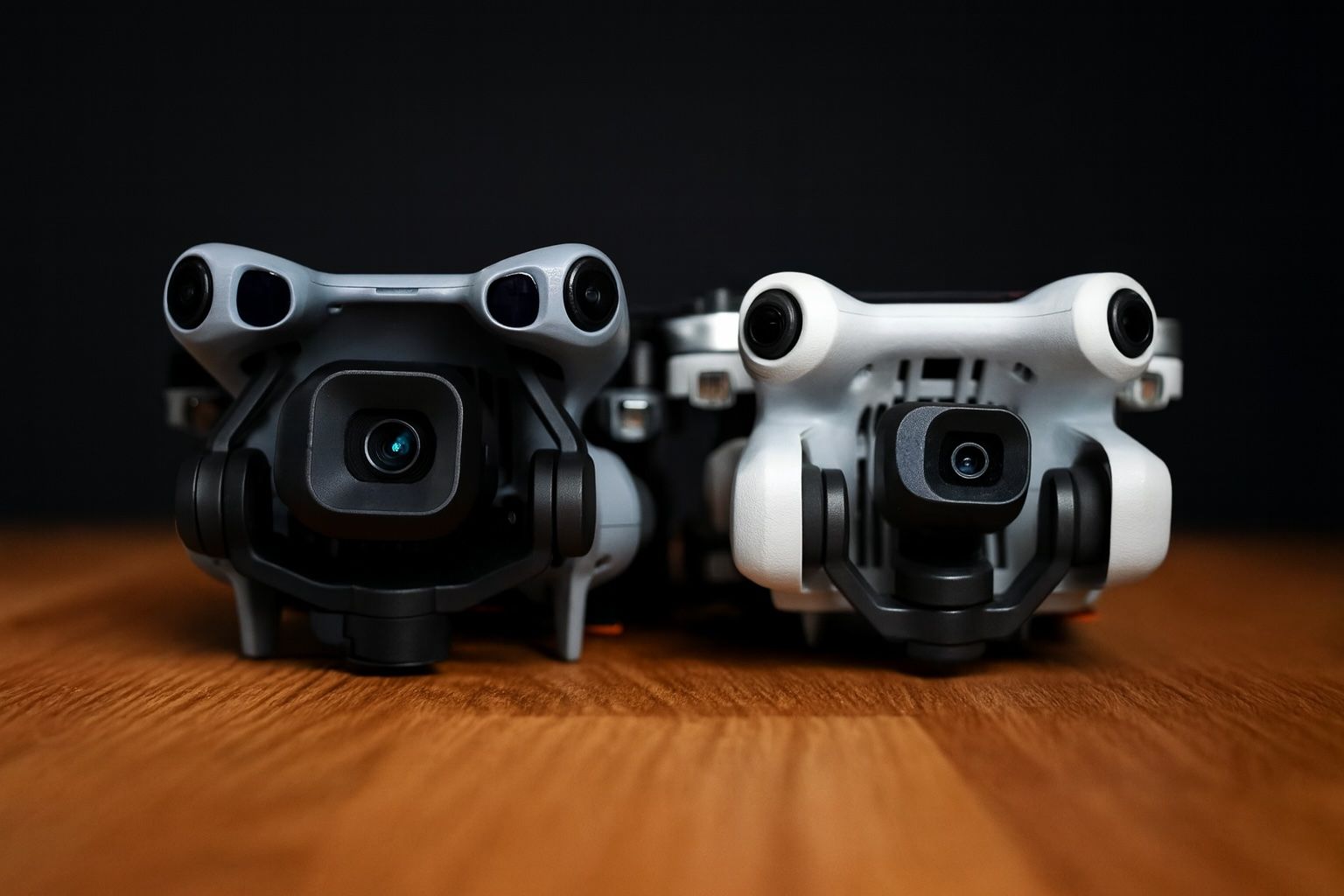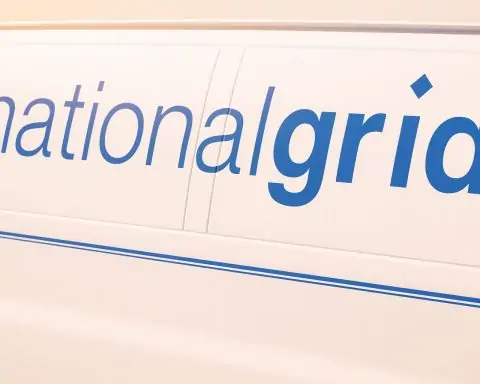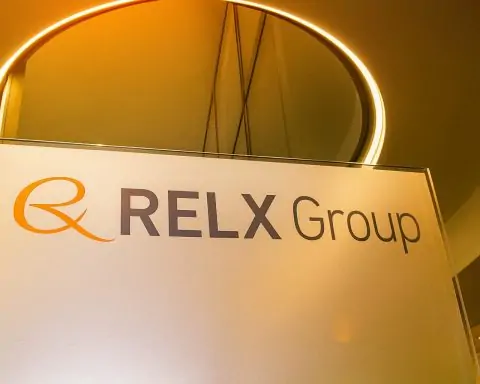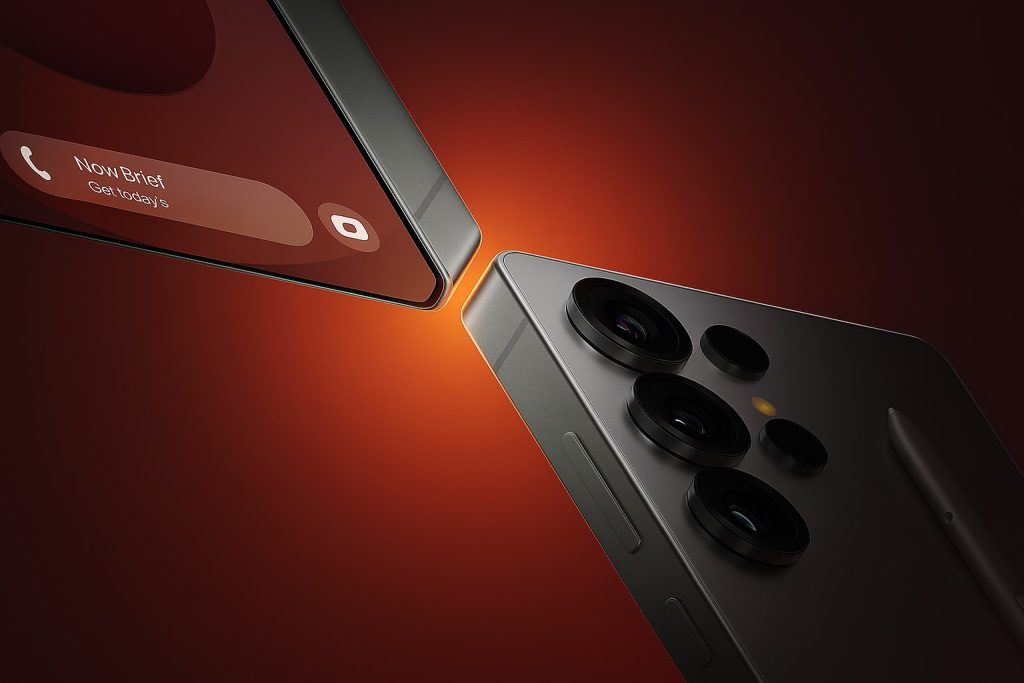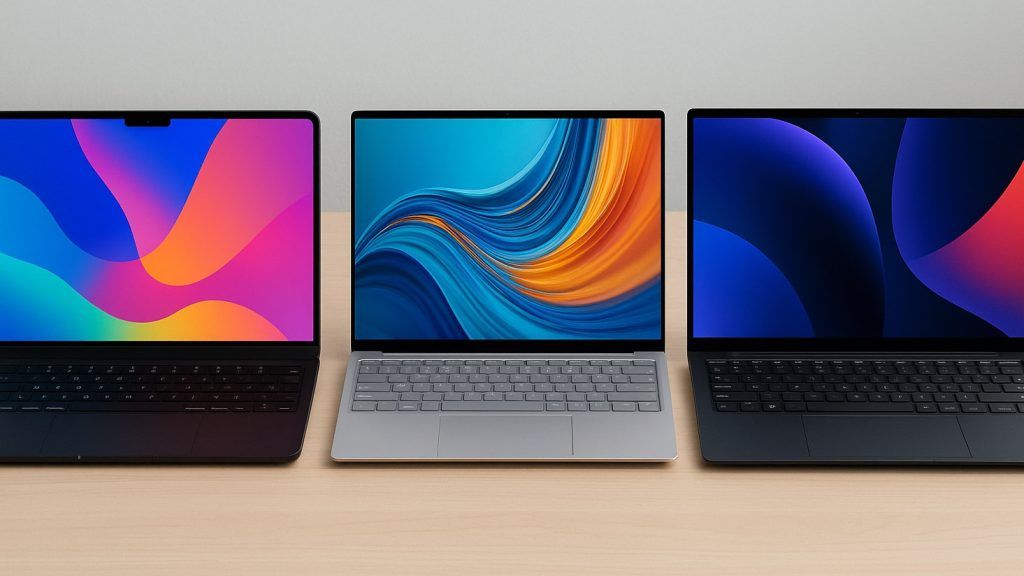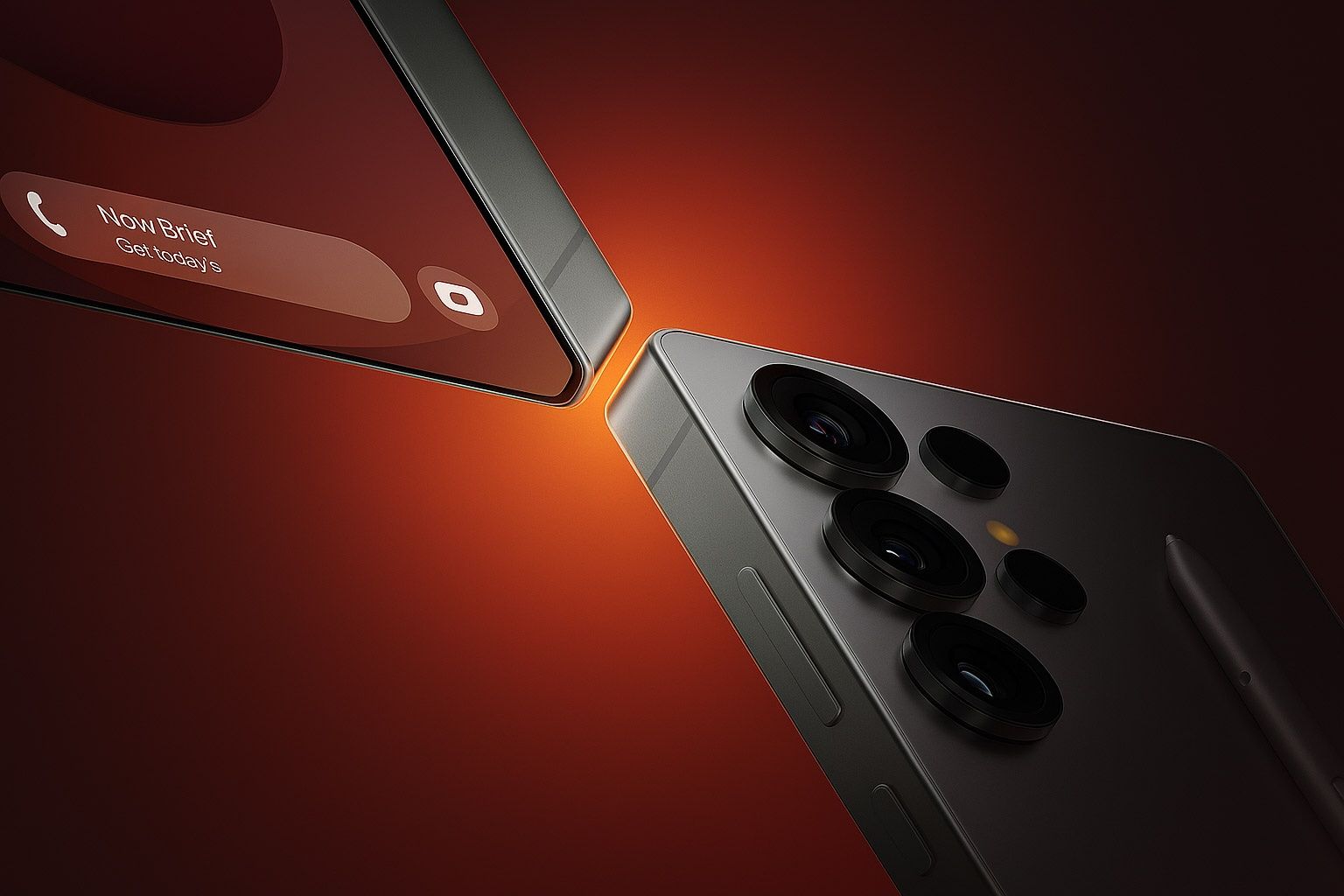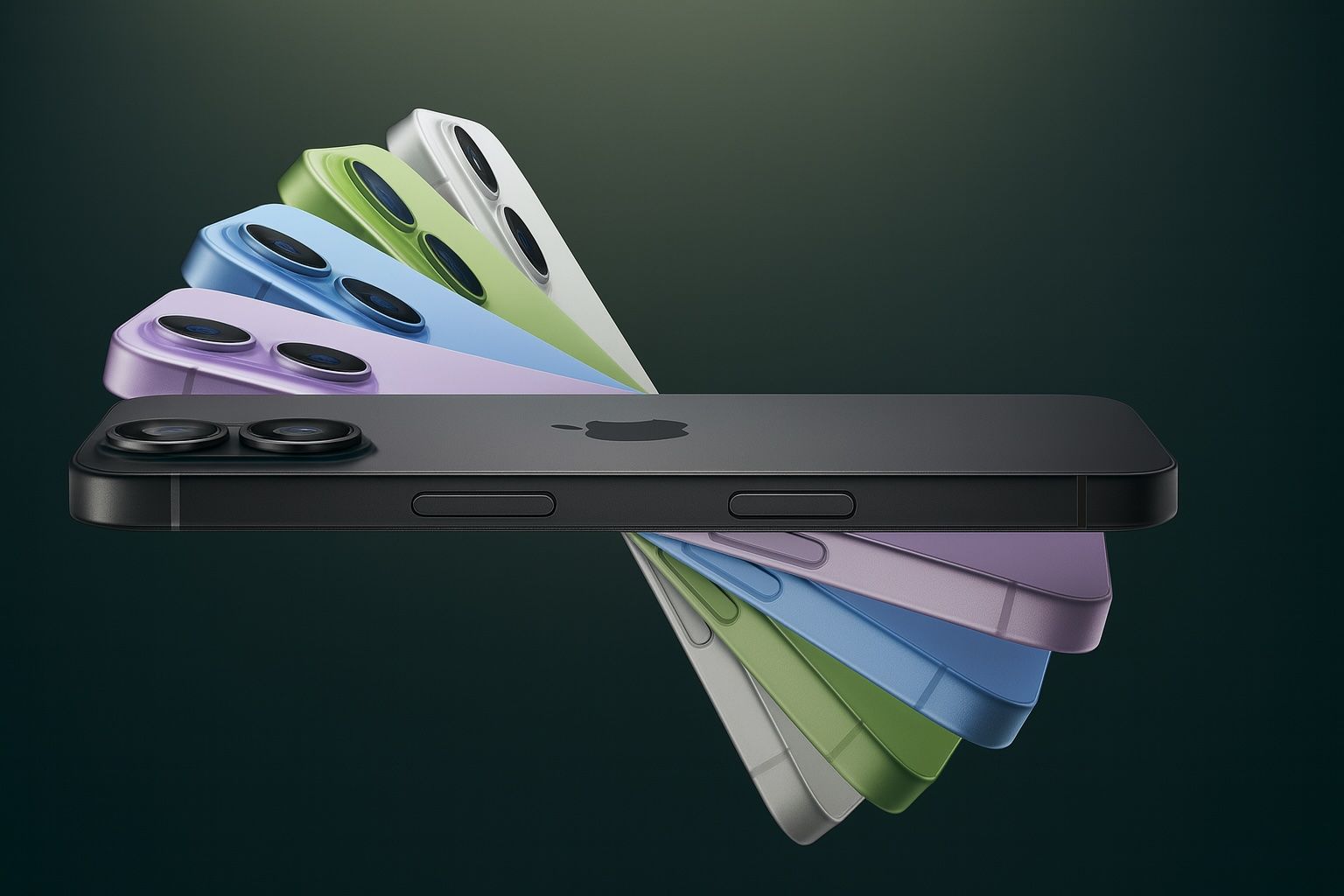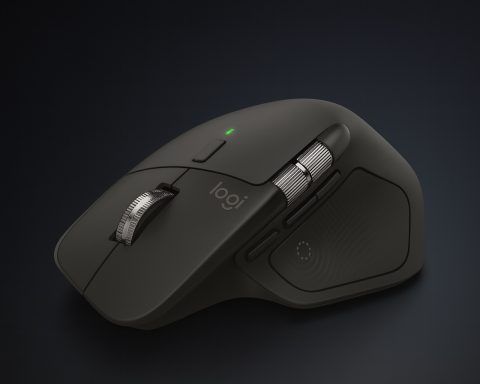- Camera Sensor & Quality: The Mini 5 Pro introduces a larger 1-inch CMOS sensor (50 MP) – the first sub-250g drone with such a sensor – dramatically boosting dynamic range and low-light performance [1]. By contrast, the Mini 4 Pro uses a 1/1.3″ CMOS sensor (48 MP). In challenging lighting (sunsets, night scenes), footage from the Mini 5 Pro looks far superior with richer details and a more cinematic look [2]. Both support 10-bit color profiles (D-Log M/HLG), but the Mini 5 Pro can even record 10-bit in normal mode with higher ISO for night scenes [3].
- Video Capabilities: The Mini 5 Pro can shoot up to 5.4K resolution (for extra detail) and offers 4K at 120 fps slow-motion, whereas the Mini 4 Pro maxes out at 4K/100fps [4]. Both record standard 4K/60fps HDR video for high-quality footage, but the Mini 5 Pro’s higher frame rates yield smoother slow-motion and greater post-production flexibility [5]. In practice, if you primarily film in bright daylight, the difference is minor – but for slow-motion enthusiasts or pixel-peepers, the Mini 5 Pro wins on video specs.
- Obstacle Avoidance: Both drones feature omnidirectional obstacle sensing (360° vision system covering front, back, sides, up and down) for safer flight. The Mini 4 Pro was the first DJI Mini with this all-around vision system, using six wide-angle cameras. The Mini 5 Pro enhances this with a forward-facing LiDAR sensor for “Nightscape” obstacle avoidance [6]. This LiDAR enables better detection of obstacles in low light, making night flying safer and more reliable [7]. In open daylight both avoid obstacles well, but the Mini 5 Pro’s LiDAR gives it an edge for nighttime or complex environments.
- Flight Performance: Both are strong performers, but the Mini 5 Pro edges ahead. It has a slightly longer flight time of ~36 minutes vs ~34 minutes on the Mini 4 Pro (with the standard battery) [8]. With the extended Intelligent Flight Battery Plus (not available in all regions), the Mini 5 Pro can fly up to 52 minutes vs ~45 minutes on Mini 4 Pro [9] – though using the Plus battery makes the drone heavier and may require registration. The Mini 5 Pro is also a bit faster (18 m/s vs 16 m/s top speed) and more wind-resistant (rated up to 12 m/s winds vs 10.7 m/s) [10] [11], which helps in breezier conditions. Both can operate in -10°C to 40°C and lack official rain-proofing.
- Portability & Design: Both Minis weigh ~249g (ultra-light category). The Mini 4 Pro is comfortably under the 250g threshold out of the box, whereas DJI lists the Mini 5 Pro at 249.9g ± 4g [12] – meaning some units could tip slightly over 250g. Physically, they’re both palm-sized and foldable for travel. The Mini 5 Pro is just a hair larger and heavier to accommodate the bigger camera and LiDAR, but interestingly has a slightly smaller propeller-span footprint when unfolded [13]. The Mini 5 Pro comes in a darker grey finish, versus the light grey of the Mini 4 Pro [14]. A nifty new design touch: on the Mini 5 Pro you can power the drone on/off by folding or unfolding one of the rear arms – a convenience over the Mini 4 Pro’s traditional power button [15].
- Transmission & Controllers: The Mini 5 Pro uses DJI’s latest OcuSync 4+ (O4+) video transmission, vs OcuSync 4.0 (O4) on the Mini 4 Pro [16]. Both promise up to ~20 km range (FCC) or ~10 km in CE regions, and deliver a 1080p live feed to the controller [17] [18]. In real-world use, the range difference isn’t huge – battery life will limit how far you can actually go – but O4+ offers stronger signal stability and better anti-interference [19]. Regarding controllers, both drones are compatible with DJI’s newest remotes. The Mini 5 Pro is typically sold with the updated RC-N3 controller (or the DJI RC 2 with built-in screen), whereas the Mini 4 Pro could use the previous RC-N2 or the same RC 2. Both support the premium DJI RC 2 (5.5″ display) and even the high-brightness DJI RC Pro 2 (7″ display) for an all-in-one experience [20]. (Notably, the Mini 5 Pro launched with limited region availability – it’s not officially sold in the U.S. as of 2025 [21].)
- Intelligent Flight Features: Both models run on the DJI Fly app and offer a rich set of smart modes. You get fan-favorites like True Vertical Shooting (tilt the camera 90° for portrait videos), QuickShots and MasterShots for automated creative shots, Hyperlapse (timelapse), and Panorama modes on both. The Mini 4 Pro introduced features like Waypoint Flight and Cruise Control, which the Mini 5 Pro also supports [22]. Thanks to the improved sensing, the Mini 5 Pro’s ActiveTrack 360° is even smarter – it can track subjects at higher speeds (up to 15 m/s), switch to rear view tracking when needed, and even auto-select tracking modes (e.g. a special Cycling mode) for optimal results [23] [24]. This means if you’re doing action sports, the Mini 5 Pro will do a better job keeping you in frame with fewer jerky transitions [25]. Both drones have Advanced Return-to-Home; the Mini 5 Pro’s RTH benefits from LiDAR and can navigate complex environments in the dark, even retracing its path if needed to avoid obstacles on the way back [26].
- Price & Value: The Mini 5 Pro launched at a higher price – around $769 USD (base package) – whereas the Mini 4 Pro debuted around $649 [27]. In 2025, the Mini 4 Pro can often be found at a discount, making it significantly cheaper. With the Mini 5 Pro you’re paying a premium for the upgraded camera, LiDAR sensor, and other refinements. Notably, the Mini 5 Pro’s Fly More Combo includes extras like an ND filter set (for pro filmmakers) which the Mini 4 Pro’s combo did not [28]. Overall, if budget is a concern, the Mini 4 Pro remains one of the best value drones in the ultra-light class, while the Mini 5 Pro is for those willing to spend more for the absolute best mini-drone tech.
- Who Should Buy Which: The DJI Mini 5 Pro is ideal for professionals and serious content creators who need top-tier imaging and autonomous features in an ultra-portable drone. If you frequently shoot in tricky lighting (dawn/dusk, nighttime), demand 4K/120fps slow-motion, or simply want the latest and greatest mini drone, the Mini 5 Pro clearly has the edge [29]. As one expert noted, its combination of a 1″ sensor, longer flight time, and improved obstacle avoidance make it “very appealing for professionals or serious hobbyists.” [30] On the other hand, the DJI Mini 4 Pro is still a fantastic all-rounder for enthusiasts, travelers, and casual pilots. It delivers excellent 4K HDR video, fully omnidirectional obstacle sensing, and up to ~30 minutes of flight on standard batteries – all while staying under 249g and at a lower price point. For many users, the Mini 4 Pro is more than enough to capture high-quality vacation footage, vlogs, and social media content [31]. In short, if you’re happy with the results from a Mini 4 Pro (or similar) and don’t specifically need the Mini 5’s upgrades, you can confidently save some money with the 4 Pro and still get an amazing drone.
Below is a detailed breakdown of how the DJI Mini 5 Pro and Mini 4 Pro compare across all major categories:
Camera and Imaging Quality
The DJI Mini 5 Pro’s camera module features a 1-inch sensor and large f/1.8 lens, a significant upgrade in imaging hardware for a palm-sized drone. The Mini 4 Pro’s camera (not shown) uses a smaller 1/1.3″ sensor but still captures impressive 48 MP photos and 4K video.
Sensor Size & Photos: The most headline-grabbing upgrade on the Mini 5 Pro is its camera sensor. It jumps to a 1-inch CMOS sensor (approximately 4x the surface area of the Mini 4 Pro’s 1/1.3-inch sensor) and can capture 50 MP still photos, whereas the Mini 4 Pro shoots at 48 MP [32]. In real-world terms, the larger sensor lets the Mini 5 Pro gather more light and detail, especially in low-light conditions. In fact, this is the first time a sub-250g drone has a 1″ sensor, and reviewers note it “makes a huge difference” for image quality [33]. Thanks to this, the Mini 5 Pro produces much cleaner night shots and better dynamic range – “sunsets, sunrises, and nighttime footage look far superior” on the Mini 5 Pro compared to the Mini 4 Pro [34]. If you mostly shoot in daylight, you might not notice a dramatic change, but in high-contrast or dim environments the Mini 5’s photos and videos retain more shadow detail and highlight information, yielding a more professional, cinematic look [35].
Lens & Aperture: Both drones use a fixed wide-angle lens ideal for aerial landscapes. The Mini 5 Pro has a 16mm equivalent focal length with a bright f/1.8 aperture [36], while the Mini 4 Pro’s camera is around 24mm equivalent at f/1.7 [37]. The difference in aperture is minor, but combined with the sensor size, the Mini 5 Pro excels in low light. Both cameras rely on advanced processing (e.g. Dual Native ISO in the Mini 4 series) to maximize dynamic range.
Video Resolution & Frame Rates: Out of the box, both drones can record up to 4K/60fps HDR video for crisp, high dynamic range footage with true-to-life colors. However, the Mini 5 Pro raises the bar by supporting 5.4K video (at 30fps), allowing you to capture even more detail than 4K [38]. This higher resolution (similar to what the larger DJI Air 2S offers) provides extra flexibility for cropping or downsampling in post-production. In terms of slow-motion, the Mini 4 Pro tops out at 4K at 100 fps, whereas the Mini 5 Pro can do 4K at 120 fps [39]. That means the Mini 5 Pro can slow things down 4× while still maintaining 4K resolution, resulting in ultra-smooth slow-mo shots of fast action (the Mini 4 Pro’s 100 fps is close but about 20% less slow-motion capability). Both drones also support 1080p at higher frame rates if you need super slow motion, but the 4K120 on the Mini 5 Pro is a standout feature in this class [40].
Color Profiles & Dynamic Range: DJI has equipped these Minis with serious imaging profiles. Both support 10-bit color modes – specifically D-Log M (a flat log profile for post-processing) and HDR HLG. On the Mini 4 Pro, using these modes gives you up to 10-bit color depth and requires post-processing to get the most out of the flat footage. The Mini 5 Pro one-ups this by even recording 10-bit in normal color mode (with H.265 codec), which means even your standard footage benefits from greater color depth and fidelity [41]. The Mini 5 Pro also pushes the ISO limits higher: up to ISO 12,800 in normal mode (versus 6,400 on Mini 4 Pro) for better night video, and up to ISO 3200 in D-Log/HLG (vs 1600 on Mini 4 Pro) [42]. In practical terms, the Mini 5 Pro can see better in the dark without as much noise, and its HDR video captures around 14 stops of dynamic range to preserve detail in highlights and shadows [43].
Special Modes – Vertical Shooting & Zoom: Both drones feature True Vertical Shooting, which rotates the camera 90° for portrait-oriented videos/photos ideal for social media. The Mini 4 Pro’s gimbal already allowed this vertical mode (as did the Mini 3 Pro). The Mini 5 Pro takes it further by introducing a unique 225° gimbal rotation capability [44]. This means the Mini 5’s camera can tilt beyond vertical, allowing creative angled shots and even upward views (up to ~60° upward tilt) that the Mini 4 Pro can’t do [45] [46]. This extra flexibility enables dynamic shots like rotating camera movements and brings an almost “crane-like” perspective to a tiny drone. The Mini 5 Pro also debuts a 48mm Medium Telephoto mode (approx 2× zoom) which is like having a built-in tele lens [47]. It isn’t an optical zoom lens, but by using the center of that 50MP sensor, it delivers a tighter field of view with minimal loss in quality. This “medium tele” mode lets you get closer shots of subjects (wildlife, people, buildings) without flying dangerously close [48]. The Mini 4 Pro can zoom digitally (up to 2X for photos, 4X in video) [49], but it’s a standard digital zoom from a smaller sensor, so the Mini 5 Pro’s cropped 1″ sensor yields sharper, more detailed zoomed-in footage. Creators will appreciate the Mini 5 Pro’s ability to switch to a tele-style perspective for more cinematic storytelling (for example, compressing the background or capturing a distant subject more prominently), something not as effectively done on the Mini 4 Pro.
Storage and Transfer: After capturing great content, storage becomes important. Here again the Mini 5 Pro has an advantage: it includes 42 GB of internal storage built into the drone [50], a huge bump from the Mini 4 Pro’s 2 GB. In case you forget your SD card, the Mini 5 Pro’s ample internal memory is a lifesaver that can hold quite a lot of 4K footage [51]. Both drones support microSD cards (the Mini 4 Pro up to 512 GB, and Mini 5 Pro up to 1 TB cards) [52]. When it’s time to offload your shots, the Mini 5 Pro supports the new Wi-Fi 6 QuickTransfer for high-speed wireless downloads up to 100 MB/s, versus about 30 MB/s on the Mini 4 Pro [53]. In practice, this means grabbing footage from the Mini 5 Pro to your phone/laptop can be three times faster – a nice quality-of-life improvement for frequent shooters.
Summary – Camera: Overall, the Mini 5 Pro is a clear winner for camera and imaging. It’s essentially bringing Mavic Air 2S-level imaging into the Mini form factor: a 1-inch sensor capable of 5.4K video, extensive dynamic range, and pro-level features. The Mini 4 Pro’s camera is no slouch – it was state-of-the-art for ultra-light drones in 2024, producing 48MP photos and 4K HDR video that impressed many (and it still outclasses older Minis or sub-250g competitors). If your main goal is casual photography or standard video in good light, the Mini 4 Pro will serve you very well. But if you demand the best image quality and flexibility from a drone that can still fit in your pocket, the Mini 5 Pro’s upgrades in sensor size, slow-motion, and low-light performance are very significant [54] [55].
Flight Performance and Battery Life
Flight performance encompasses how long and how well each drone can fly. Both the Mini 4 Pro and Mini 5 Pro benefit from DJI’s ongoing improvements in efficiency and power for the Mini series. They use similar batteries (LiPo packs) and propulsion systems with some tweaks in the newer model.
Battery Life: The rated maximum flight times (with the standard Intelligent Flight Battery) are 34 minutes on the Mini 4 Pro vs 36 minutes on the Mini 5 Pro [56]. So the Mini 5 Pro gains about 2 extra minutes of hover time – not a dramatic leap, but every bit helps. In real-world flying, expect around 25-30 minutes of actual flight per charge on either drone (since real flights involve wind and more aggressive maneuvers, not ideal hover) [57]. Both drones support an optional larger battery called the Intelligent Flight Battery Plus, which extends flight time greatly at the cost of weight. With the Plus battery, the Mini 4 Pro can fly up to ~45 minutes and the Mini 5 Pro up to ~52 minutes [58]. These are record-breaking times for small drones – over 50 minutes in the air on a single charge for the Mini 5 Pro! However, note that using the Plus battery pushes the weight of the drone above 250g (closer to ~300g) which in many jurisdictions means you lose the registration-free advantage. DJI does not even sell the Plus battery in some regions (like the EU) due to regulatory reasons [59]. If you do have access, the Plus battery can be fantastic for extended shoots, but most users will fly with the standard battery to stay under 250g and compliant with rules.
Speed and Maneuverability: Despite their tiny size, these drones can zip around quite fast. The Mini 4 Pro’s top speed is about 16 m/s (~57.6 km/h or 35.8 mph) in Sport mode [60]. The Mini 5 Pro gets a slight boost to 18 m/s (~64.8 km/h or 40.3 mph) in Sport mode [61] [62] – making it one of the fastest micro drones in DJI’s lineup. Additionally, the Mini 5 Pro has improved acceleration: its ascent speed in Sport mode is 10 m/s (double the Mini 4 Pro’s 5 m/s) [63] [64]. This means the Mini 5 can climb and maneuver more aggressively when you need it to (for example, catching a fast-moving subject or fighting wind gusts). In Normal mode and Cine mode, both drones have similar, much lower speed limits for smooth footage capture.
Wind Resistance: Ultra-light drones are more susceptible to wind due to their low mass. DJI engineered both Minis to be surprisingly stable, and the Mini 4 Pro was rated to withstand winds up to about 10.7 m/s (~24 mph). The Mini 5 Pro strengthens that to about 12 m/s (~26.8 mph) maximum wind resistance [65]. In practice, this means the Mini 5 Pro can handle breezy conditions a bit better – it will drift less and maintain position more reliably in high winds before the drone warns you or struggles. The added weight (albeit slight) and more powerful motors of the Mini 5 likely contribute to this. Still, caution is advised flying either drone in very windy conditions due to their light weight. Both drones have GPS and vision stabilization to hover precisely, but heavy gusts could overcome their ability. For most moderate winds (up to Beaufort scale 5), they’ll perform admirably, with the Mini 5 Pro just offering more confidence at the upper end of that range [66].
Operating Range & Altitude: Both models use the same radio frequencies and, under ideal conditions, are rated for extremely long ranges (more on that under Transmission). In terms of altitude, the Mini 5 Pro can take off from elevations up to 6,000 m (19,685 ft) above sea level, whereas the Mini 4 Pro was limited to 4,000 m (13,123 ft) [67] [68]. This is relevant if you plan to fly in high-altitude locations (e.g. mountain regions) where the air is thinner – the Mini 5 Pro’s motors are tuned to handle that thinner air at higher altitudes. Most casual users won’t approach these limits, but it shows the Mini 5 Pro is built for slightly more demanding environments.
Agility and Handling: Both drones are very nimble and responsive, especially in their Sport modes. Pilots report that the Mini 5 Pro feels a bit “snappier” in controls – likely due to improved ESCs or motor dynamics. The difference isn’t huge, but advanced users doing quick maneuvers might notice the Mini 5 holds its trajectory a bit tighter. For videography purposes, both have tripod-like stability in Cine mode, so you can get smooth shots without jarring movements. Neither drone is designed for acrobatics (they’re GPS-stabilized camera platforms), but they can bank and turn quickly when needed.
Flight Time in Practice: It’s worth noting that while these maximum flight times are impressive, if you are flying a long distance out, you must reserve enough battery to come back. With ~30 minutes usable time on a standard battery, a safe one-way range is roughly 6–8 km (assuming no wind) as you’ll need to return home before power runs low [69]. Both drones will automatically trigger Return-to-Home around 20% battery if still far away, to help ensure they make it back. In other words, battery life tends to be the limiting factor for how far you can go, more so than the signal. So while the Mini 5 Pro can technically fly slightly longer and farther, in practical terms the difference isn’t game-changing for most scenarios.
In summary, flight performance is excellent on both, with the Mini 5 Pro holding slight advantages in speed, wind tolerance, and endurance. If you often push the limits of your drone’s flight envelope – e.g. flying in windy coastal areas or needing every extra minute of airtime – the Mini 5 Pro gives you that extra cushion. If not, the Mini 4 Pro still offers strong performance for a drone of this size and weight class.
Portability and Design
Both the Mini 5 Pro and Mini 4 Pro are incredibly compact, folding down to fit in the palm of your hand. The Mini 5 Pro (pictured) remains under 250g takeoff weight, making it as travel-friendly and regulation-friendly as its predecessor.
One of the biggest selling points of DJI’s Mini series is portability – and neither of these drones disappoint. Both the Mini 4 Pro and Mini 5 Pro are ultra-light, compact drones that you can easily toss in a small bag or even a jacket pocket. Here’s how they compare in design:
Size & Weight: The Mini 4 Pro weighs about 249 g (battery included), sticking to that magic number under 250 grams to comply with easier regulations in many countries. The Mini 5 Pro is officially listed at 249.9 g (±4 g) [70]. DJI has removed the explicit “<249g” marketing for the Mini 5, possibly because some units can be a few grams over the limit depending on manufacturing variance [71]. In practice, most Mini 5 Pro units with the standard battery will still be at or around 250 g, so from a regulatory standpoint they’re treated similarly (in the EU, the Mini 5 Pro even carries a C0 class label like sub-250g drones do) [72]. If you add accessories like propeller guards or the larger Plus battery, both drones will exceed 250g, which would then require registration in those jurisdictions – so keep them lightweight if you want to fly under hobby rules.
Dimensionally, when folded, the Mini 5 Pro measures roughly 157×95×68 mm, which is very close to the Mini 4 Pro’s folded size of 148×94×64 mm [73]. Essentially both are palm-sized when folded, with foldable arms that tuck in neatly. When unfolded for flight, the Mini 5 Pro’s footprint is about 255×181×91 mm (with propellers), whereas the Mini 4 Pro’s is listed as 298×373×101 mm [74]. That spec might sound like the Mini 4 Pro is much larger, but it likely accounts for prop tips at maximum span. In reality, side by side the drones look very similar; some reports even say the Mini 5 Pro has a slightly smaller diagonal span despite being a hair longer, due to its new arm design [75]. The key takeaway: both are extremely compact, but expect the Mini 5 Pro to be just marginally bulkier because of its upgraded components (for example, its camera module and forward sensors protrude a bit more).
Build & Appearance: Both drones share DJI’s signature folding design and a generally similar airframe shape that has evolved since the original Mavic Mini. The Mini 4 Pro has a sleek light-grey plastic body with dark grey accents. The Mini 5 Pro comes in a slightly darker grey tone overall [76] – it’s a subtle difference, but side-by-side you’ll notice the Mini 5 Pro’s color is more graphite. The Mini 5 Pro’s camera gimbal is larger (to house that 1″ sensor and lens), and on the front you can spot a key design change: the Mini 4 Pro’s front has two fisheye vision sensors (for obstacle avoidance) that look like “eyes”. The Mini 5 Pro has a similar dual-camera setup for vision, plus a central round aperture which is the new LiDAR sensor [77]. This gives the Mini 5 Pro a distinct “3-eyed” look from the front. Functionally, the rest of the body design is quite similar – both have vent grills, downward sensors, a rear battery door, and microSD slot on the tail.
One small but very handy design tweak on the Mini 5 Pro is the arm power-on mechanism. Instead of only relying on a power button, DJI added a feature where unfolding the rear right arm automatically powers on the drone, and folding it back initiates a power-off countdown [78]. This means you can get the drone powered up quickly just by unfolding it, without fumbling for the small power button – a minor convenience that feels “modern” compared to the Mini 4 Pro’s standard long-press power button. (If you prefer, you can still turn the Mini 5 Pro on/off via its button as well.) It’s a neat innovation that users have praised, making setup and teardown a tad faster [79].
Both drones have LED indicators and front auxiliary lights for status and illumination. The Mini 4 Pro introduced an optional upward-facing LED that can blink to aid visibility or night flying; the Mini 5 Pro continues that feature.
Noise and Propellers: Both use two-blade props on each arm with quick-release screws. Sound-wise, they are relatively quiet for drones, producing a soft buzz. There’s no significant difference in prop noise reported between the two – any Mini drone is far less noisy than bigger drones like the Mavic series. The Mini 5 Pro’s new prop design might be slightly more efficient, but expect a similar noise footprint (still best to avoid hovering too low over people or animals to be respectful).
Portability: In terms of carrying them around, there is no difference – both are extremely portable. Each can fold and slip into a jacket pocket or small carrying case. The controllers (discussed later) are actually larger/heavier pieces in your kit than the drones themselves! DJI’s Fly More kits include a small shoulder bag that easily fits the drone, controller, and spare batteries. If you’re traveling or hiking, either drone is a non-issue to bring along, which is the whole point of the Mini series.
To sum up, design and portability are virtually a tie. DJI maintained the under-250g compact magic with the Mini 5 Pro despite the added tech, which is impressive. The Mini 5 Pro feels like a refined version of the Mini 4 Pro’s design – slightly more polished with that auto power-on arm, a new color, and the integration of LiDAR. Unless you examine them closely, most people would have a hard time telling them apart at a glance. Rest assured that whichever you choose, you’re getting a truly mini drone that can go anywhere with ease.
Obstacle Avoidance and Smart Flight Features
One of the standout features of these “Pro” Minis is that they offer omnidirectional obstacle sensing, a capability previously reserved for larger drones. This means they can detect obstacles coming from all directions (forward, backward, left, right, above, and below) and either brake or bypass them to help prevent crashes. Let’s compare how the systems differ:
Omnidirectional Vision System: The Mini 4 Pro was the first drone of its size to have an all-direction vision system. It uses a network of six fisheye vision cameras – pairs on the front, back, and sides – plus additional sensors on the top and bottom, giving it a full 360° field of “vision” [80]. Additionally, it has a downward infrared sensor for precision hovering and terrain following [81]. This setup allows the Mini 4 Pro to sense obstacles when flying in any direction and enable features like APAS (Advanced Pilot Assistance Systems) to automatically avoid or brake before hitting something [82]. The Mini 4 Pro’s system works great in daylight and well-lit conditions – it will, for example, see a tree branch in front and either stop or smoothly go around it if you have bypass mode on.
The Mini 5 Pro inherits that omnidirectional vision system and improves upon it for low-light scenarios. Its headline addition is a front-mounted LiDAR sensor (a tiny laser rangefinder) as part of what DJI calls the Nightscape obstacle sensing system [83]. In low-light or near-darkness, the regular optical cameras may struggle to “see” obstacles clearly. The LiDAR on the Mini 5 Pro, however, can actively measure distance up to ~25 m ahead even at night (using invisible laser pulses) [84] [85]. This means the Mini 5 Pro is much more capable of detecting obstacles during night flights or in dark environments like wooded areas at dusk. Together with an upgraded 3D infrared sensing system, the Mini 5 Pro can even perform obstacle-aware Return-to-Home in the dark, retracing its path to avoid obstacles it encountered in daylight [86]. In essence, the Mini 5 Pro’s obstacle sensing is designed to work “almost anywhere, anytime,” giving you extra peace of mind if you fly at night or in high-contrast lighting where purely visual systems might falter [87].
In normal daytime flying, both drones will stop or avoid obstacles in all directions. In tight spaces (flying indoors or through forest trails, for example), you’ll find both quite adept at not crashing – though the pilot should always remain cautious. The Mini 5 Pro’s sensing hardware is a bit more advanced, but unless you specifically fly at night or in very complex environments, both provide a similar safety net.
ActiveTrack 360° (Subject Tracking): Both the Mini 4 Pro and Mini 5 Pro support DJI’s ActiveTrack 360° feature, meaning they can automatically track a subject while flying around it, thanks to that omnidirectional sensing. On paper, both use the latest DJI ActiveTrack algorithms (sometimes referred to as ActiveTrack 6.0 in marketing) and can track a subject from any angle. However, the Mini 5 Pro has enhanced tracking performance due to a combination of the LiDAR and improved software. DJI has programmed the Mini 5 Pro to handle higher tracking speeds and added context-specific tracking modes. For example, in open areas the Mini 5 Pro can track a subject moving up to 15 m/s (~33.5 mph) by adjusting its flight speed and trajectory [88]. In more cluttered environments, it can switch to a backward/rear tracking mode automatically if it determines that’s safer to keep the subject in frame without crashing [89]. The Mini 5 Pro can also recognize certain activities (like cycling) and optimize its tracking strategy for that scenario [90] [91] – e.g. anticipating the path of a cyclist differently than a person running. The Mini 4 Pro’s ActiveTrack works well for basic use (it will follow a person or vehicle and even circle around them), but it might lose the subject or require more manual input in very dynamic scenes.
Early testers note the Mini 5 Pro’s tracking is smoother and more reliable, with fewer sudden jumps or lost subjects: “It predicts movement better and keeps subjects in frame with fewer jerky transitions,” one reviewer observed [92]. For anyone into sports, outdoor adventures, or filming yourself, this is a notable upgrade. You can, for instance, have the Mini 5 Pro follow you mountain biking through a trail with more confidence than the Mini 4 Pro. Both drones’ 360° obstacle avoidance ensure they try to avoid trees or obstacles while tracking, but the Mini 5 Pro, thanks to its refined algorithms, can be trusted a bit more to navigate and adjust on the fly to keep the shot going [93].
Other Intelligent Flight Modes: Both drones are packed with DJI’s intelligent flight modes to help you capture cinematic shots easily:
- QuickShots: Pre-programmed moves like Dronie, Rocket, Circle, Helix, Boomerang, etc., are available on both. They let you get cool sweeping shots around a subject with one tap.
- MasterShots: Both support MasterShots (the Mini 4 Pro was the first Mini to get it). MasterShots will execute a series of elaborate camera moves around a subject and automatically edit a highlights reel for you – great for getting a professional-looking montage without piloting expertise [94].
- Hyperlapse: Both can do automated hyperlapse (timelapse with motion) in 4K. You can set waypoints or free movement hyperlapses. The Mini 5 Pro’s slightly longer battery means you can attempt a slightly longer hyperlapse sequence, but otherwise they perform similarly.
- Panorama: Both have Sphere, 180°, and Wide-Angle panorama modes, stitching multiple shots into a seamless panorama.
- Waypoint Flight: Introduced with the Mini 4 Pro, this mode allows you to pre-plan a flight route with GPS waypoints and camera angles. Both the Mini 4 Pro and Mini 5 Pro can fly autonomous waypoint missions (a feature previously seen on higher-end DJI drones) [95]. This is useful for complex shots or mapping a specific route to repeat.
- Cruise Control: Another feature both drones share is Cruise Control (from the Mini 4 Pro onward), which lets you lock in a forward flight speed so you can focus on camera control during a move (like “coasting” without holding the stick forward).
- Advanced Return-to-Home (RTH): Both have RTH that not only goes back to the takeoff point, but actively avoids new obstacles on the way. The Mini 5 Pro’s RTH is bolstered by its LiDAR at night, as mentioned, so it can even handle coming home in darkness by relying on memory and sensors [96].
Overall, both drones are extremely smart for their size, offering a suite of automated features that make aerial filming easy. The Mini 5 Pro’s obstacle avoidance and tracking are a step above – if you envision flying a lot in challenging environments (thick forests, urban settings, low light) or you need the very best subject tracking for action shots, the Mini 5 Pro is the safer bet. For more typical use (clear open areas, gentle flights), the Mini 4 Pro’s system is already very capable and adds a huge safety net compared to any drone that lacks obstacle sensors.
Remote Control and Transmission System
Controlling these drones and maintaining a clear video feed is crucial, and DJI has incrementally improved its tech here too.
OcuSync 4.0 vs 4.0+: The Mini 4 Pro was the first to use DJI’s O4 (OcuSync 4.0) transmission system, and the Mini 5 Pro uses an updated O4+ system. Both operate on similar dual-band frequencies and offer 1080p live video feeds on your controller device. In FCC regions (like the US), both drones advertise up to 20 km max transmission distance (line-of-sight in ideal conditions) [97]. In CE regions (Europe, etc.), they’re limited to 10 km. In practice, you should always fly within visual line-of-sight, so you won’t be hitting 20 km – but what these specs really tell us is that the signal strength and anti-interference tech are top-notch on both.
The O4+ system on the Mini 5 Pro is essentially an enhanced version that provides stronger signal quality and better interference resistance [98]. For example, if you’re flying in an area with lots of Wi-Fi or radio noise, or behind obstacles (say, behind some trees or buildings briefly), the Mini 5 Pro’s feed might stay more solid where an O4 drone could drop to a lower resolution or stutter. DJI also notes O4+ uses a new algorithm and can transmit 10-bit HDR video back to your screen (useful if you have a high-brightness monitor) [99]. In contrast, the Mini 4 Pro’s O4 sends 1080p/60fps live view which is already very smooth [100]. In most real-world scenarios, pilots haven’t found a drastic difference – as one expert put it, on paper O4+ is better, but “in practice, this upgrade isn’t a game-changer for most pilots” since both drones maintain rock-solid connections well beyond the point your battery will last [101] [102].
Controllers: Both drones can bind with the same family of DJI controllers, but the default kit might include a different unit:
- The DJI RC-N3 is the standard controller shipping with the Mini 5 Pro. It’s a regular controller that uses your smartphone as the screen (you clamp your phone in). The RC-N3 is actually a slight upgrade over the previous RC-N1/N2 – it’s lighter, though it interestingly has about half the battery life of the older model (probably to save weight) [103]. The Mini 4 Pro originally shipped with the DJI RC-N2 (very similar to N1) in its basic package. The good news is both the Mini 4 Pro and 5 Pro are compatible with RC-N1, N2, and N3, so you can mix and match if needed. Essentially, any of DJI’s recent phone controllers will work, with N3 being the newest.
- The DJI RC 2 is an optional controller with a built-in 5.5-inch display (this display outputs up to 700 nits) [104]. It’s the successor to the original DJI RC. Both the Mini 4 Pro and Mini 5 Pro support the DJI RC 2. In fact, DJI sells combos for both drones that include the RC 2 instead of the phone controller. Using the RC 2 means you don’t need to attach a phone at all – it’s a self-contained unit running the DJI Fly app, which many users find more convenient. The RC 2 was launched alongside O4, and it has the necessary tech for O4/O4+. So whether you have a Mini 4 Pro or Mini 5 Pro, the RC 2 will give you essentially identical experience and range.
- The DJI RC Pro 2 is a high-end controller (with a 7.02-inch ultra-bright screen ~2000 nits and more processing power) [105]. It is also supported by both drones for those who demand the best. It offers more internal storage (128 GB) for screen recording or cached videos [106]. It’s pricey, but if you have one, you can use it with either drone and enjoy an even better FPV view in sunlight.
- The older DJI RC (first gen with screen) and RC-N1 are not compatible with O4 drones, so those won’t work with Mini 4 Pro/5 Pro. DJI moved to RC 2 and RC-N2/N3 to support O4’s new transmission. So if you’re upgrading from a Mini 3 Pro that had the original DJI RC, note you’d need the new controllers for these drones.
It’s also worth mentioning that DJI has a Motion Controller (RC Motion 3) and Goggles 3 for a kind of FPV experience. As of now, the Mini 5 Pro isn’t yet compatible with the goggles or motion controller (perhaps pending a firmware update) [107]. The Mini 4 Pro gained some support for goggles via firmware later in its life. If flying with goggles is something you want, keep an eye on updates – but traditionally, the Mini series is flown via the standard controllers and phone/app interface.
Flight App (DJI Fly): Both drones use the DJI Fly app for flight interface (or the built-in app on the RC 2/RC Pro 2). There’s virtually no difference here – the app will show slightly different options if you have Mini 5 (for example, enabling that 5.4K mode or the 48MP stills), but overall the experience is the same. You get a live video feed, map, telemetry, and easy access to the intelligent modes through on-screen icons. DJI Fly is known for being user-friendly and is continually updated. Since the Mini 5 Pro is newer, it might have a couple of extra toggles (like “Night Mode” for obstacle avoidance, etc.), but if you’ve flown one, you can fly the other without re-learning anything.
In summary, the control experience and transmission reliability on both drones are excellent. The Mini 5 Pro offers the latest and greatest with O4+, but the real-world benefit is only marginal. Both can be paired with the same advanced controllers, which is great for flexibility. If you are buying fresh, the Mini 5 Pro’s package might come with the newer RC-N3 by default, whereas a Mini 4 Pro might come with an RC-N2; but functionally when you’re out flying, you won’t notice any major difference – you’ll get a strong 1080p live view and responsive controls with either drone.
Software and App Support
Since both drones run on the DJI Fly app ecosystem, they share a lot in terms of software capabilities and support. However, the Mini 5 Pro being newer has a few added tricks and refinements.
DJI Fly App Features: Both the Mini 4 Pro and Mini 5 Pro leverage the DJI Fly app (available for iOS and Android) which is designed to be a simplified, easy-to-use interface for both beginners and experienced pilots. Through the app, you access all the intelligent flight modes mentioned earlier (QuickShots, MasterShots, Hyperlapse, Panorama, ActiveTrack, etc.), adjust camera settings, and get firmware updates. DJI Fly also includes features like the map with GEO zones, compass, and attitude indicators to help you navigate safely.
One nice aspect for the Mini series is that DJI Fly will automatically apply certain optimizations if it detects, say, a low-light scene (like activating the Mini 4 Pro’s Night Shots mode which applies noise reduction for low light video) [108]. These kind of smart enhancements operate behind the scenes and both drones benefit from them.
Firmware Updates: DJI has a track record of improving drones via firmware. The Mini 4 Pro received new features in updates (for example, it got support for goggles after launch, or improvements to RTH). The Mini 5 Pro likely will get tweaks as well. Both being relatively recent, you can expect continued software support for a while. They also both have the DJI FlySafe database integration for no-fly zones and such.
Feature Differences: Out of the box, as noted, both have very similar feature sets. The Mini 5 Pro’s added hardware does enable a couple of new software features or enhancements:
- Off-State QuickTransfer: The Mini 5 Pro supports a feature where you can transfer footage from the drone to your phone without fully powering on the drone’s motors or remote. This is an extension of QuickTransfer that DJI introduced – essentially, you can turn on the drone’s Wi-Fi while it’s off and use your phone to grab the files quickly. This was mentioned in Mini 5 Pro marketing as a convenience [109]. The Mini 4 Pro requires the drone (and controller) to be on and connected for file transfers (unless you pop out the SD card). So Mini 5 has a slight edge for those who frequently offload footage in the field.
- Dynamic Home Point & Advanced RTH: The Mini 5 Pro introduced a dynamic home point feature – if you’re using the RC 2 controller with GPS, the drone can update the home point to the controller’s location as you move. This is great if, say, you’re moving with your subject (like on a boat or hiking). This feature wasn’t present on the Mini 4 Pro at launch, but could potentially be backported. The Mini 5 Pro also, as discussed, has a more advanced return-to-home that can utilize its sensors better.
- Flight Route Memory: Tied to obstacle sensing, the Mini 5 Pro can remember the path it flew and use that for return if needed (particularly useful if it flew during daylight and needs to come back in darkness) [110]. This isn’t an explicit user-facing mode, but a behind-the-scenes safety function enabled by its better sensors.
- App Integration: Both drones can work with the DJI LightCut app (for quick editing of footage) or other third-party apps for editing. The Mini 4 Pro and Mini 5 Pro footage (especially D-Log) is intended to be color graded, and DJI provides LUTs and profiles in the downloads section for each. From a software support perspective, both being popular consumer models means many third-party apps (for mapping, for tracking, etc.) will add support for them as well.
No Geofencing Differences: Sometimes users ask if a newer model has stricter geofencing or limitations – both of these follow DJI’s GEO system where you may need to unlock certain zones to fly (like near airports, etc.). There’s no difference between Mini 4 Pro and 5 Pro in that regard; if anything, both being under 250g might exempt you from some local rules, but software-wise they will both prompt you about no-fly zones in the same way.
Controller App/SDK: As of 2025, DJI offers an SDK for some drones which allows third-party apps to control them. The Mini 4 Pro got SDK support (making it accessible by apps like Litchi or DroneDeploy) a little while after release. The Mini 5 Pro, being newer, might not have full SDK support yet, but likely will in time. This mainly matters for advanced use cases like automated mapping missions or custom app development.
In everyday use, a typical pilot won’t find any major software feature missing on the Mini 4 Pro that the Mini 5 Pro has, aside from those minor enhancements. DJI tends to unify the user experience across its products, so both drones get the benefit of the latest app interface improvements and updates (like improved menus, tutorials, etc.).
Reliability: Both drones have return-to-home, battery warnings, and will automatically land if the battery is critical. The software will warn you if it’s too windy, if the signal is weak, etc. These aspects are mature on DJI Fly and equally apply to both models.
Finally, both drones have comprehensive support from DJI – meaning you can download manuals, get customer support, and even purchase DJI Care Refresh (accidental damage insurance) for either. The Mini 5 Pro being a flagship mini might get a bit more marketing attention, but the Mini 4 Pro is also a current product in 2025, so it’s fully supported by DJI with firmware and service.
Price and Value for Money
When comparing the Mini 5 Pro and Mini 4 Pro, it’s clear that DJI is segmenting them for slightly different audiences and budgets. Let’s talk numbers and value.
Launch Price: The DJI Mini 4 Pro launched in late 2024 with a starting price of about $649 USD (standard kit with RC-N2 controller) [111]. The DJI Mini 5 Pro, launched in 2025, came in around $769 USD for the base package [112]. That’s roughly a $120 difference, or about ~18% more expensive for the newer model. If you opt for bundles with the RC 2 controller (or Fly More combos with extra batteries), the price for each goes up accordingly, but the gap remains similar – the Mini 5 Pro kit will cost more than an equivalent Mini 4 Pro kit. For example, one Canadian retailer lists the Mini 4 Pro at $800 CAD (about $600 USD) for the basic package and $1089 CAD with the RC 2 combo [113], whereas the Mini 5 Pro in Europe was listed around €829 (~$880 USD) for the RC-N3 kit at release. These prices can fluctuate with promotions and regional differences, but expect to pay a premium for the Mini 5 Pro’s upgraded hardware.
Current Street Price: By late 2025, the Mini 4 Pro has been on the market longer and may see occasional discounts or bundle deals, especially if DJI or retailers run sales. The Mini 5 Pro, being newer, might hold its price for longer. If budget is a big concern, you might find the Mini 4 Pro a fair bit cheaper (maybe by $100 or more) on sale or second-hand, which can be a great value given it’s still a high-end mini drone.
What You Get for the Money: The price difference reflects the tech upgrades:
- With the Mini 5 Pro, you pay more but you get the 1-inch sensor camera, LiDAR obstacle sensor, a bit more internal storage (42 GB vs 2 GB), a slight bump in flight performance, and included ND filters in the Fly More Combo [114] which are a nice bonus for videographers.
- The Mini 4 Pro, at a lower price, still gives you an excellent 48 MP camera, full obstacle sensing, and most of the same intelligent features. It’s basically “Mini 5 Pro lite” for a chunk less money.
From a value perspective, if you don’t absolutely need the Mini 5 Pro’s advantages, the Mini 4 Pro offers more bang for your buck. You’re getting a cutting-edge mini drone (remember, the Mini 4 Pro itself was just recently the most advanced mini) at a lower cost, which is a strong value proposition. As one drone expert pointed out, “For many pilots, the Mini 4 Pro remains a fantastic all-rounder”, and upgrading to a Mini 5 Pro won’t automatically make your footage hugely better if you’re already happy with what the Mini 4 can do [115]. This is especially true if your use cases are casual – you might not fully utilize the Mini 5’s extra capabilities to justify its price.
On the other hand, the Mini 5 Pro’s value comes in if you will exploit its strengths. If those extra 5-10% of performance or quality improvements mean you get the shot you need, then the cost delta is easily justified. Think of scenarios like: you often shoot at night (Mini 5’s low-light prowess), you love slow-motion (4K/120), you do long one-take shots (need that extra battery life or upward gimbal tilt), or you simply want to future-proof yourself with the latest hardware. In those cases, the Mini 5 Pro can be seen as a worthy investment – it’s still much cheaper than jumping to a larger drone like a Mavic 3 Pro, yet delivers closer-to-flagship performance in many respects [116].
Additional Costs: Remember to factor in extras. Both drones ideally should be paired with at least one extra battery (if not the Fly More kit with two extras). Spare propellers, a carry case, ND filters (if not included), and perhaps DJI Care (insurance) are all optional costs. Since the Mini 5 Pro’s Fly More includes ND filters [117], that’s one less thing to buy for some users. The Mini 4 Pro’s Fly More kit did not include ND filters, so videographers might need to spend ~$50 more for a good set. Little differences like that narrow the price gap slightly if you were going to buy filters anyway.
Resale Value: Typically, newer models hold value better. A used Mini 4 Pro may drop in price on the second-hand market now that the Mini 5 Pro exists, whereas the Mini 5 Pro will hold a premium for longer. If you plan to upgrade frequently, sometimes buying the latest ensures you can resell it for more later.
Verdict on Value: If you’re looking purely at cost-benefit, the Mini 4 Pro is arguably the sweet spot – you get 90% of the Mini 5 Pro’s functionality at a lower price, which is hard to beat. The Mini 5 Pro is in a sense a more niche high-end offering: it asks a bit more money for those last bits of performance. As one reviewer succinctly put it, “If money is truly no object compared to the limitless potential of the Mini 5 Pro’s advanced features… the choice is obvious.” [118] In other words, if you just want the best mini drone and cost doesn’t matter, get the Mini 5 Pro and you’ll love it. But if you’re value-conscious or on a tighter budget, the Mini 4 Pro is likely the smarter choice – it’s still one of the most powerful drones in the size/weight class and “has the price tag to prove it” relative to lower models, but not as high as the Mini 5 [119].
Ideal Use Cases and Target Audience
Choosing between the Mini 5 Pro and Mini 4 Pro ultimately comes down to your needs and what you plan to do with the drone. Here’s a breakdown of who each model is best suited for:
DJI Mini 5 Pro – “The Professional’s Pocket Drone”: This drone is aimed squarely at professional users or hardcore enthusiasts who refuse to compromise on imaging and features, yet need the smallest form factor. If you are a content creator, filmmaker, or drone photographer who travels a lot (hence wanting something under 250g) but still demands top-tier camera performance, the Mini 5 Pro is made for you. It’s also ideal for:
- Low-Light Aerial Photography/Videography: If you often shoot cityscapes at night, twilight real estate shots, or sunrise/sunset landscapes, the Mini 5 Pro’s 1-inch sensor and superior night obstacle sensing will significantly improve your results and safety [120] [121].
- Action Sports and Tracking Subjects: Are you into mountain biking, running, or adventure vlogging where you want the drone to follow you? The Mini 5 Pro’s enhanced ActiveTrack will keep up better and frame you more reliably during fast or complex moves [122]. It’s almost like having an automated cameraman – great for solo creators.
- Cinematic Video Production: The ability to shoot in 5.4K and 4K/120, plus D-Log 10-bit, gives you flexibility for high-quality productions. You can slow down footage ultra-smoothly or crop in post without losing 4K quality. The Mini 5 Pro’s 225° gimbal also allows unique angles (even slight upward shots) that can make your footage stand out. It’s a mini drone that a professional could intercut with footage from much more expensive drones and still maintain quality.
- Heavy Content Shooters: If you fly very frequently and generate lots of footage, the Mini 5’s bigger internal storage and faster Wi-Fi transfers will save you time and headaches. It’s built for those out in the field every day capturing content.
- “No-Compromise” Travelers: For travelers who visit places with strict drone weight regulations but still want the best shots, the Mini 5 Pro ensures you have essentially a flagship drone in miniature form. From sweeping drone selfies in front of monuments to detailed 4K hyperlapses of cityscapes, it covers it all in a portable package.
As an example of the Mini 5 Pro’s target user, the team at DrDrone (a DJI dealer) notes that “the Mini 5 Pro is both the most powerful and most expensive [Mini]. Its camera rivals some of the best full-size DJI drones, while its omnidirectional obstacle sensing system allows you to fly safely almost anywhere, anytime.” [123] This really underlines that the Mini 5 Pro is for those who want no compromises despite the drone’s tiny size. If that resonates with you – if you read through its feature list and say “I need that” to the bigger sensor, LiDAR, etc. – then you are the target audience.
DJI Mini 4 Pro – “The Enthusiast’s All-Rounder”: The Mini 4 Pro is perfect for enthusiast hobbyists, travelers, and even first-time drone buyers who want high-end capabilities without going overboard. It democratized a lot of advanced features into the mini class at a more accessible price. Ideal use cases include:
- Travel and Tourism: The Mini 4 Pro is a dream travel drone. Under 250g means you often don’t need to register it, and its small size won’t weigh you down. Yet you get 4K HDR beautiful video of your trips, and the obstacle avoidance helps protect it in unfamiliar places. Whether you’re hiking, at the beach, or exploring a new city, the Mini 4 Pro captures professional-looking footage of your journey.
- Social Media Content Creation: If you create content for YouTube, Instagram, TikTok, etc., the Mini 4 Pro gives you everything you need – vertical shooting for Reels/TikToks, MasterShots for quick edits, and excellent quality that will impress viewers. Unless your content specifically requires slow-motion 120fps or frequent night shots, your audience would hardly know you’re not using the absolute latest drone, because the Mini 4 Pro’s output is already great.
- Aerial Photography Learning and Hobby Flying: For someone looking to step up from a basic drone (or starting fresh but wanting to invest in something that will last), the Mini 4 Pro is a fantastic choice. It’s easy enough for beginners (with its sensors and “no training needed” beginner-friendly modes [124]), but advanced enough that you won’t outgrow it quickly. You can practice manual flying, try all the intelligent modes, and even do a bit of FPV-with-goggles flying (with firmware updates) as a fun bonus.
- Budget-Conscious Pros: Not every professional gig needs a $2000 drone. If you’re a wedding photographer or real estate agent wanting a secondary drone for quick shots, the Mini 4 Pro can deliver solid results and is less risky (and conspicuous) to fly in tight spots than a larger drone. And if something unfortunate happens, it’s a smaller investment at stake. Many professionals keep a Mini as a backup or for specific situations – the Mini 4 Pro can fill that role admirably.
- Those wary of weight regulations: If you absolutely must stay under 250g with no exceptions (perhaps your country is strict, or you don’t want to worry about the 249.9±4g variance of the Mini 5), the Mini 4 Pro is a safer bet weight-wise. It “weighs under 249g right out of the box” with a bit of margin [125], so you have peace of mind on the legal front.
A drone reviewer summed it up well: “If your flying is more casual — travel videos, vlogging, social media clips, or daytime shots — the Mini 4 Pro still delivers excellent performance… For many pilots, the Mini 4 Pro remains a fantastic all-rounder.” [126] This encapsulates the Mini 4 Pro’s broad appeal. It really hits a sweet spot of portability, capability, and price that can satisfy a wide range of users from weekend hobbyists to serious drone geeks.
Bottom Line: Both the Mini 5 Pro and Mini 4 Pro are outstanding mini drones, and there’s a fair bit of overlap in what they can do. The Mini 5 Pro is like an “ultimate edition” that pushes the limits of what’s possible under 250g – aimed at power users who will utilize its every feature. The Mini 4 Pro is the “95% there” drone that will be adequate (or even perfect) for the majority of users who want great results without breaking the bank.
Consider what and when you shoot, how critical top-of-the-line image quality is for you, and of course your budget. If you find yourself nodding along with the Mini 5 Pro’s advantages and saying “I could use that,” it might be worth the investment. But if you’re thinking that the Mini 4 Pro already sounds more than capable of fulfilling your needs, you’re probably right – and you’ll save some money that could go towards accessories or other gear.
Regardless of which you choose, it’s amazing that we now have two sub-250g drones that pack so much technology. DJI has truly made it possible to get near professional-grade aerial footage from a device that fits in your hand, whether you go with the Mini 4 Pro or the Mini 5 Pro. Safe flying and happy shooting!
Sources:
- DJI Official Product Pages and Specifications [127] [128]
- Heliguy – “DJI Mini 5 Pro vs DJI Mini 4 Pro” (comprehensive comparison) [129] [130]
- Oscar Liang – “DJI Mini 5 Pro vs Mini 4 Pro Full Comparison – Is It Worth Upgrading?” (reviewer insights) [131] [132]
- DrDrone (Canada) – “Which DJI Mini is the Way to Go: Mini 5 Pro vs Mini 4 Pro…” (feature breakdown and recommendations) [133] [134]
- Additional commentary from DJI forums and community experts on new features (LiDAR, ActiveTrack improvements) [135] [136].
References
1. oscarliang.com, 2. oscarliang.com, 3. www.heliguy.com, 4. oscarliang.com, 5. oscarliang.com, 6. www.heliguy.com, 7. oscarliang.com, 8. oscarliang.com, 9. oscarliang.com, 10. www.heliguy.com, 11. www.heliguy.com, 12. oscarliang.com, 13. www.heliguy.com, 14. www.heliguy.com, 15. www.heliguy.com, 16. www.heliguy.com, 17. www.heliguy.com, 18. www.heliguy.com, 19. www.heliguy.com, 20. drdrone.ca, 21. oscarliang.com, 22. drdrone.ca, 23. www.heliguy.com, 24. drdrone.ca, 25. oscarliang.com, 26. drdrone.ca, 27. oscarliang.com, 28. www.heliguy.com, 29. oscarliang.com, 30. oscarliang.com, 31. oscarliang.com, 32. oscarliang.com, 33. oscarliang.com, 34. oscarliang.com, 35. oscarliang.com, 36. www.dji.com, 37. drdrone.ca, 38. oscarliang.com, 39. oscarliang.com, 40. oscarliang.com, 41. www.heliguy.com, 42. www.heliguy.com, 43. drdrone.ca, 44. www.heliguy.com, 45. drdrone.ca, 46. drdrone.ca, 47. oscarliang.com, 48. oscarliang.com, 49. drdrone.ca, 50. www.heliguy.com, 51. oscarliang.com, 52. www.heliguy.com, 53. www.heliguy.com, 54. oscarliang.com, 55. oscarliang.com, 56. oscarliang.com, 57. oscarliang.com, 58. oscarliang.com, 59. www.heliguy.com, 60. www.heliguy.com, 61. www.heliguy.com, 62. www.heliguy.com, 63. www.heliguy.com, 64. www.heliguy.com, 65. www.heliguy.com, 66. www.heliguy.com, 67. www.heliguy.com, 68. www.heliguy.com, 69. oscarliang.com, 70. oscarliang.com, 71. oscarliang.com, 72. oscarliang.com, 73. www.heliguy.com, 74. www.heliguy.com, 75. www.heliguy.com, 76. www.heliguy.com, 77. www.heliguy.com, 78. www.heliguy.com, 79. www.heliguy.com, 80. oscarliang.com, 81. drdrone.ca, 82. drdrone.ca, 83. www.heliguy.com, 84. www.heliguy.com, 85. www.heliguy.com, 86. drdrone.ca, 87. drdrone.ca, 88. www.heliguy.com, 89. www.heliguy.com, 90. www.heliguy.com, 91. drdrone.ca, 92. oscarliang.com, 93. oscarliang.com, 94. drdrone.ca, 95. drdrone.ca, 96. drdrone.ca, 97. oscarliang.com, 98. www.heliguy.com, 99. drdrone.ca, 100. drdrone.ca, 101. oscarliang.com, 102. oscarliang.com, 103. drdrone.ca, 104. drdrone.ca, 105. drdrone.ca, 106. drdrone.ca, 107. drdrone.ca, 108. drdrone.ca, 109. drdrone.ca, 110. drdrone.ca, 111. oscarliang.com, 112. oscarliang.com, 113. drdrone.ca, 114. www.heliguy.com, 115. oscarliang.com, 116. www.dji.com, 117. www.heliguy.com, 118. drdrone.ca, 119. drdrone.ca, 120. oscarliang.com, 121. oscarliang.com, 122. oscarliang.com, 123. drdrone.ca, 124. www.dji.com, 125. oscarliang.com, 126. oscarliang.com, 127. www.dji.com, 128. www.dji.com, 129. www.heliguy.com, 130. www.heliguy.com, 131. oscarliang.com, 132. oscarliang.com, 133. drdrone.ca, 134. drdrone.ca, 135. oscarliang.com, 136. oscarliang.com
